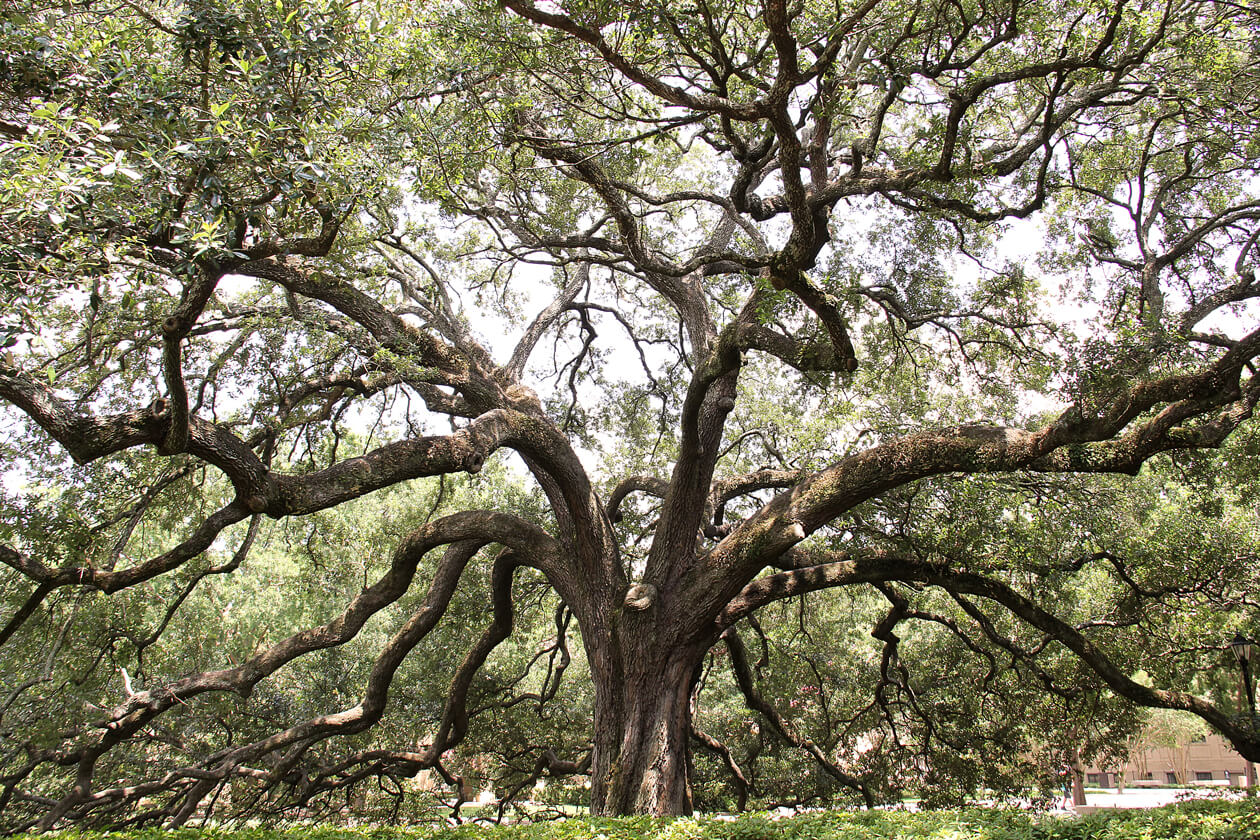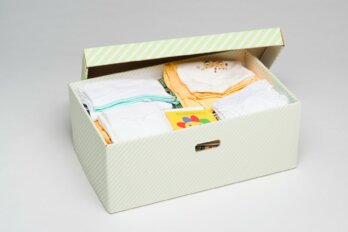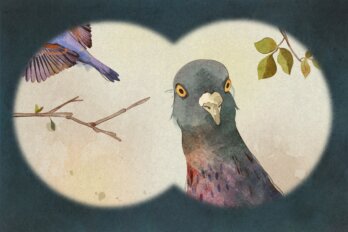
Before an Anishinaabe woman gives birth to a child, elder Sam Achneepineskum tells me, she sings to them. She speaks to them when she is in a good place, and she thanks them for coming into the family’s life.
The baby is also told stories of their history, so they know who they are when they are born; they are prepared. When they come screaming into being, they are met by a bevy of women, each of whom has a special role to play in the birthing process. Traditionally, when a child is born, the elders come to give the child the name they will carry for the rest of their days. A naming ceremony can happen at any time. When it does, the child enters into the realm of the tribe.
Directly after birth, the placenta is planted firmly in the earth. The umbilical cord is also saved and buried to ensure the child’s future connection with the land. For one year, the child is not to touch the ground. A baby is carried in their mother’s tikinagan, a wooden board outfitted with hides and furs that holds the baby snug until that special day when they are ready to walk on their own. When that day comes, the baby has a “walking out” ceremony, wherein they take their first step, feel the ground firmly beneath their feet. And then that child is one with the Earth.
These ceremonies are the beginnings of the rites of passage, the path to adulthood. If a child misses a stage, they become disconnected from who they are and where they come from. This is how an Anishinaabe child learns Mino Bimaadiziwin, “leading a good life.” One can choose to be Anishinaabe, to live the good life, to live the way one’s ancestors wanted one to, but to do this, one must return to the old teachings and learn to speak the language. This is the way it is and the way it always will be.
Attachments, kinship, and family tell us who we are and where we come from. They give us a sense of dignity, a sense of belonging, right from birth. In Indigenous cultures, family units go beyond the traditional nuclear family living together in one house. Families are extensive networks of strong, connective kinship; they are often entire communities. If a child is orphaned or if their biological parents are unable to care for them, the broader family takes over the primary rearing of that child. Instead of having one mother, the child could have a number of maternal figures. But if a child is taken away from their parents, their extended family, their community, they suffer multiple losses.
Listen.
When Edmund Metatawabin gifts you with a story, you had better listen.
Ed is standing on his homemade raft, a sixteen-by-sixty-three-foot colossus slowly making its way down the swollen Albany River, a remote 982-kilometre waterway that begins in northwestern Ontario and feeds into James Bay. The raft, made by Ed’s own hands, is just giant cedar logs lying side by side and tied together with generous loops of rope. On top of the raft, taking up about half of its platform, is a small wooden cabin that resembles a motor home. Inside the cabin, you can hear muffled laughter, dishes clanking, and the sweet smell of warm bannock.
I’m standing beside him in my brown rain suit, covered from head to toe in revolutionary fabric advertised to keep anyone dry in any conditions. But the high-priced suit from the city has become damp under the weight of the water that the clouds are scooping up from the Albany and pelting at us with all their might.
The driving rain is pummelling Ed’s brown construction jacket; bits of light from inside the cabin reflect off the orange safety tape on his coat.
Ed turns to me and says, “Big Brother is always hungry.”
Big Brother has an insatiable appetite, a relentless hunger that rises up from his grumbling belly and makes him a voracious monster. His massive jaws never stop chomping; his mouth moves like a giant sawmill, devouring anything that comes his way.
Big Brother is so hungry that he has turned his Little Brother into a slave, tasked with heading out into the vast wilderness to find him food. So Little Brother ventures out alone into the northern forests, walking among the scaly looking red-barked tamarack trees that line the dark waters of the meandering rivers that bleed into the giant bays in the north and to the east. Little Brother walks through the black spruce, which have grown tall and lean back from the cold wind blowing along the river’s edge. As he goes, Little Brother chops down everything that he sees. He gathers everything up in large bundles so he can take it all back to Big Brother to feed his hungry belly.
Little Brother does not just gather wood. He also sweeps up all the fish from the black rivers, and he steals the gold and the diamonds from deep, deep inside the Earth’s crust.
“Cruel Big Brother. He eats and he eats and he eats,” Ed says as water drips off his oilskin fedora.
Ed is a community leader to his people, the Cree of James Bay. He is a survivor and the man in charge of what we lovingly call our “cruise down the Albany.”
Ed was one of the 150,000 Indigenous Canadians who were separated from their parents and sent to residential schools. From the mid-1880s to 1996 there were 139 church-run and government-funded residential schools across Canada, seventeen in Ontario. The schools’ purpose was to convert children to Christianity and isolate them from their homes, families, traditions, and culture, in order to assimilate them to the Canadian way of life.
At the age of seven, Ed was taken from his family and sent to the notorious St. Anne’s Indian Residential School, run by the Oblate Catholic nuns in Fort Albany, on the James Bay coast. There he was physically assaulted regularly and sexually abused by one of the staff members. He and his fellow inmates often went to bed hungry, and they lived in fear of the homemade electric chair used to punish the children. Survivors report students being strapped to the chair and shocked until they were semiconscious.
Ed left St. Anne’s a broken teenage boy, and when he returned home, he was a stranger to his parents, his siblings, and his Cree culture. He took off, heading out west, where he drank to forget his painful memories.
But, somehow, Ed made it back. He made it back to his family, to the land of the Fort Albany First Nation, located on the southern shore of the mighty Albany where it meets James Bay. Ed turned to ceremony, to his elders, and to old teachings to find his way back to the land and to himself.
And that is why we are cruising down the Albany River on a freezing day in July. Inside the small cabin, nearly a dozen teens from Fort Albany First Nation are huddled together for warmth around a kitchen table. The tall, gawky youths—almost all dressed in various shades of black and with ball caps on—may have been born and bred in Fort Albany, but this is their very first trip out into the land to learn traditional ways of living, from skinning a fish to sleeping on the soft, mossy ground.
“When will Little Brother finally stand up and say, ‘Enough’?” Ed wonders, the rain using his long black-and-grey ponytail as a vessel to travel down to the small of his back and whoosh off him. He fears Little Brother has lost his way.
Just to the south, vast pit mines have laid waste to miles and miles of once pristine boreal forests. Known as the northern lungs of the Earth, the forests act as massive “carbon sinks,” taking carbon dioxide out of the atmosphere. They extend across the northern hemisphere, from Canada to Norway and Russia.
But now development encroaches on this land. Prospectors mine for precious diamonds hidden in deep pipes of rock or for traces of chromite, the mineral used to make stainless-steel appliances. Every single day that it is in operation, the Victor Diamond Mine, owned by De Beers, one of the global gem giants, is permitted to pump between 79 million and 150 million litres of water from the Victor pit in order to access the diamond deposits. The excess water is then pumped into the Attawapiskat, a 748-kilometre river that runs south of the Albany. The displacement of all this water, Ed says, upsets the fragile ecosystems.
The Cree have travelled these riverbanks—watched and protected the water and land surrounding it—for as long as they can remember. The Albany weaves like a thick snake, separating the resource-rich north from the hungry, ever-growing south, which is constantly demanding to be fed. Big Brother demands what Little Brother has in order to feed its industry, construct its sprawling urban housing developments, and manufacture goods for its consumer-driven society.
You see, notes Ed, the more we damage the Earth, the more our Indigenous selves will wither and hollow with the destruction of the land. Take the Indian out of the land, away from their language, culture, mode of thought, and traditional way of living, and you begin to destroy their soul. Each bulldozer ploughing through the muskeg is like another cut.
Ed tells me that some people have suffered so much they disappear into the bush and never come back. This act is symbolic of taking one’s life. It disrupts the rhythm of life, because everyone born on Turtle Island has their path set for them, he says, and the choice to end your life is not yours to make—it is the Creator’s.
And this is why he piles teenagers onto his raft, along with his younger brother Mike Metatawabin, a former deputy grand chief of Nishnawbe Aski Nation. Like his older brother Ed, Mike is a survivor of St. Anne’s. Since he was five years old, he has been carrying the memory of his time there in a nightmare he can’t forget. In the dream, he is in a church with all the other boys from school. When he looks up, instead of seeing Jesus, he sees the Devil himself nailed to the crucifix.
“That nightmare traumatized me, and I couldn’t tell anyone,” Mike says. “I kept asking myself, ‘What did I do? What sin did I commit? Am I a bad boy?’ I lived with this dream for decades.”
Ed and Mike have watched many of their generation fall victim to the pain of the past—addictions, violence, suicide. They know too well those hollow feelings of being lost.
But the brothers have survived. They’ve made it through the unimaginable. They are still here.
And they know that to heal the spirits of the next generation, they must reintroduce the youth to who they are. Where they come from. Their true culture and rites of passage.
Excerpted from All Our Relations: Finding the Path Forward, copyright © 2018 by Tanya Talaga and the Canadian Broadcasting Corporation. Reproduced with permission from House of Anansi Press, Toronto.





